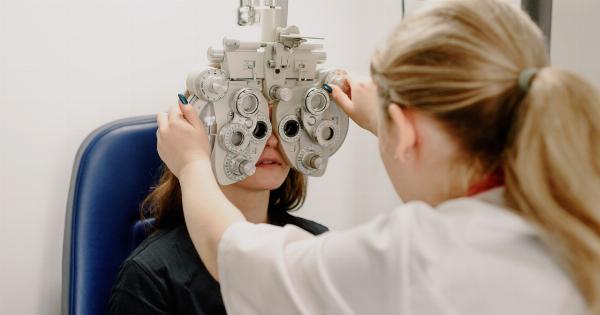Stroke is a severe medical condition that occurs when there is an interruption in the blood flow to the brain. It can lead to long-term disability or even death if not treated promptly.
It is essential to identify potential risk factors for stroke and take appropriate measures to prevent its occurrence.
Testing for stroke risk involves a comprehensive evaluation of an individual’s medical history, lifestyle choices, and various diagnostic procedures.
In this article, we will discuss the different tests used to assess stroke risk and the steps you can take to minimize your chances of experiencing a stroke.
1. Medical history and risk factor assessment
When assessing stroke risk, healthcare professionals start by conducting a detailed review of an individual’s medical history.
They examine previous medical conditions, family history of stroke or cardiovascular diseases, and any specific risk factors that may contribute to stroke development.
Uncontrollable risk factors for stroke include age, sex, and family history. However, several medical conditions and lifestyle choices can increase the likelihood of stroke and are considered modifiable risk factors.
2. Blood pressure measurement
High blood pressure, also known as hypertension, is the most significant controllable risk factor for stroke. Individuals with high blood pressure are more vulnerable to stroke due to the strain it puts on the blood vessels and the heart.
Testing for stroke risk typically involves measuring blood pressure using a sphygmomanometer cuff, which is wrapped around the upper arm.
The reading is presented as two numbers, indicating systolic pressure (when the heart contracts) and diastolic pressure (when the heart is at rest). A blood pressure reading of 140/90 mmHg or above is considered high and requires immediate attention to reduce stroke risk.
3. Cholesterol level assessment
Unhealthy cholesterol levels can lead to the formation of plaque in the arteries, restricting blood flow and increasing the risk of stroke.
Testing for stroke risk often includes assessing total cholesterol, LDL (low-density lipoprotein) cholesterol, HDL (high-density lipoprotein) cholesterol, and triglyceride levels.
A simple blood test can measure these cholesterol levels, providing valuable information about an individual’s cardiovascular health.
High levels of LDL cholesterol and triglycerides, along with low levels of HDL cholesterol, indicate an increased risk of stroke and other cardiovascular diseases.
4. Blood sugar measurement
Type 2 diabetes is a significant risk factor for stroke as it increases the likelihood of developing blockages or clots in the blood vessels.
The testing for stroke risk often involves measuring blood sugar levels, either through fasting blood sugar tests or HbA1c (glycated hemoglobin) tests.
Elevated blood sugar levels indicate a higher risk of stroke and must be managed effectively through lifestyle changes and, if necessary, medication to reduce the risk.
5. Electrocardiogram (ECG)
An electrocardiogram is a non-invasive test that checks for irregularities in the heart’s electrical activity. This test is essential in evaluating potential heart conditions that may lead to strokes, such as atrial fibrillation (AFib).
AFib is an irregular heart rhythm that causes blood clots to form in the heart chambers. If a blood clot dislodges and reaches the brain, it can trigger a stroke. Early detection of AFib allows for appropriate treatment to reduce the risk of stroke.
6. Carotid ultrasound
The carotid arteries are the main blood vessels supplying the brain with oxygenated blood. A carotid ultrasound is performed to assess the presence of plaque or fatty deposits (atherosclerosis) in these arteries.
A non-invasive procedure, carotid ultrasound uses sound waves to visualize the carotid arteries’ structure and detect any abnormalities. The presence of significant blockages in the carotid arteries may indicate an increased risk of stroke.
7. Magnetic Resonance Imaging (MRI)
Magnetic Resonance Imaging, or MRI, uses powerful magnets and radio waves to generate detailed images of the brain.
MRI scans are often used to assess the brain’s blood vessels, identify any abnormalities, and detect early signs of an impending stroke.
This non-invasive procedure provides high-resolution images that help healthcare professionals evaluate the blood flow within the arteries leading to the brain, detect blockages, and plan appropriate interventions to minimize the risk of stroke occurrence.
8. Transcranial Doppler (TCD) ultrasound
Transcranial Doppler ultrasound is a test that uses sound waves to evaluate blood flow through the brain’s blood vessels. This test helps identify any abnormalities, such as blood clots, that may increase the risk of stroke.
TCD ultrasound is a non-invasive procedure that involves placing a handheld device called a transducer on the scalp.
The transducer emits sound waves that bounce off blood cells, providing information about the blood flow velocity within the brain’s blood vessels.
9. Echocardiogram
An echocardiogram is a test that uses sound waves to create real-time images of the heart’s structure and function. This test is especially helpful in detecting potential causes of stroke related to heart conditions.
Echocardiography can identify blood clots or abnormalities in the heart’s structure and valves that may increase the risk of stroke.
It provides valuable insight into the heart’s overall health and helps guide preventive measures to minimize stroke occurrence.
10. Lifestyle modifications and prevention strategies
After a comprehensive assessment of stroke risk factors, healthcare professionals advise individuals on making necessary lifestyle modifications and preventive strategies to reduce the risk of stroke. These may include:.
a) Maintaining a healthy diet: Incorporating fruits, vegetables, whole grains, lean proteins, and healthy fats while limiting salt, sugar, and saturated and trans fats consumption.
b) Regular physical activity: Engaging in moderate-intensity aerobic exercise for at least 150 minutes per week, along with muscle-strengthening activities on two or more days.
c) Smoking cessation: Quitting smoking is crucial, as smoking significantly increases the risk of stroke.
d) Limiting alcohol consumption: Excessive alcohol intake can raise blood pressure, contributing to an increased risk of stroke. It is advisable to limit alcohol consumption to moderate levels.
e) Medication adherence: For individuals with specific medical conditions, such as high blood pressure or diabetes, it is essential to follow prescribed medications and treatments to manage these conditions and reduce the risk of stroke.
By implementing these lifestyle modifications and prevention strategies, individuals can significantly reduce their risk of stroke and improve their overall health and well-being.
Conclusion
Testing for stroke risk involves a combination of medical history assessment, lifestyle evaluation, and various diagnostic procedures.
High blood pressure, cholesterol levels, blood sugar, and the presence of atrial fibrillation or carotid artery abnormalities are significant risk factors for stroke. Further diagnostic tests like electrocardiograms, MRIs, TCD ultrasounds, and echocardiograms can help identify potential causes or warning signs of stroke.
Making necessary lifestyle modifications and following preventive strategies, such as maintaining a healthy diet, engaging in regular physical activity, and avoiding unhealthy habits like smoking and excessive alcohol consumption, are vital in reducing the risk of stroke.































